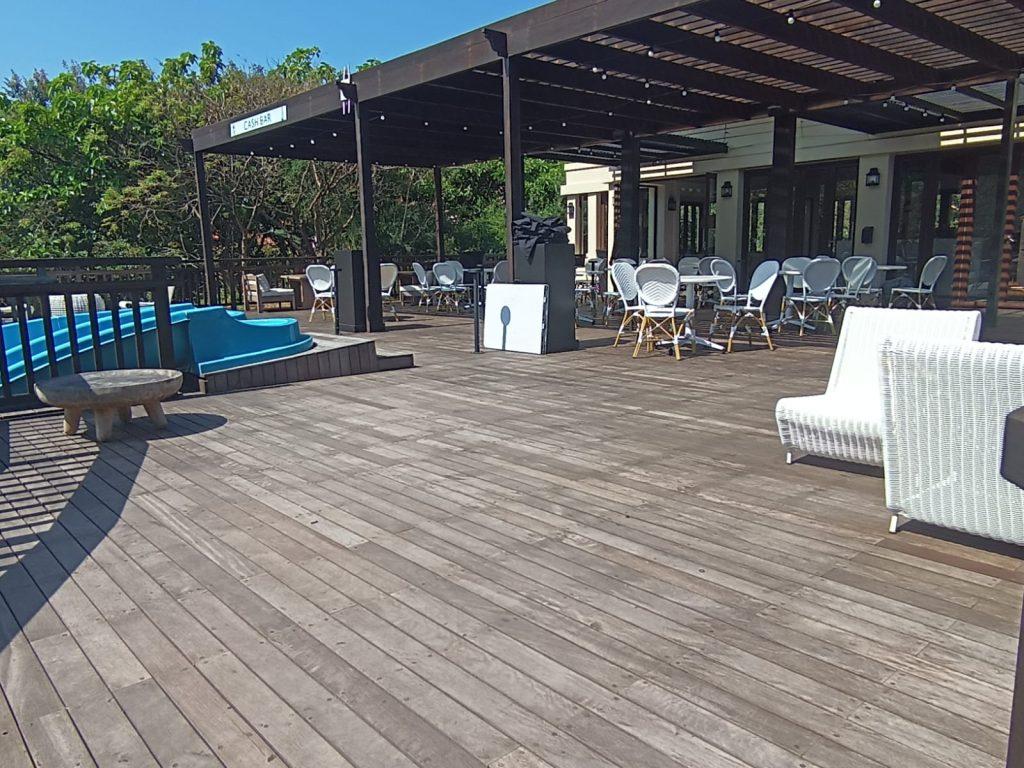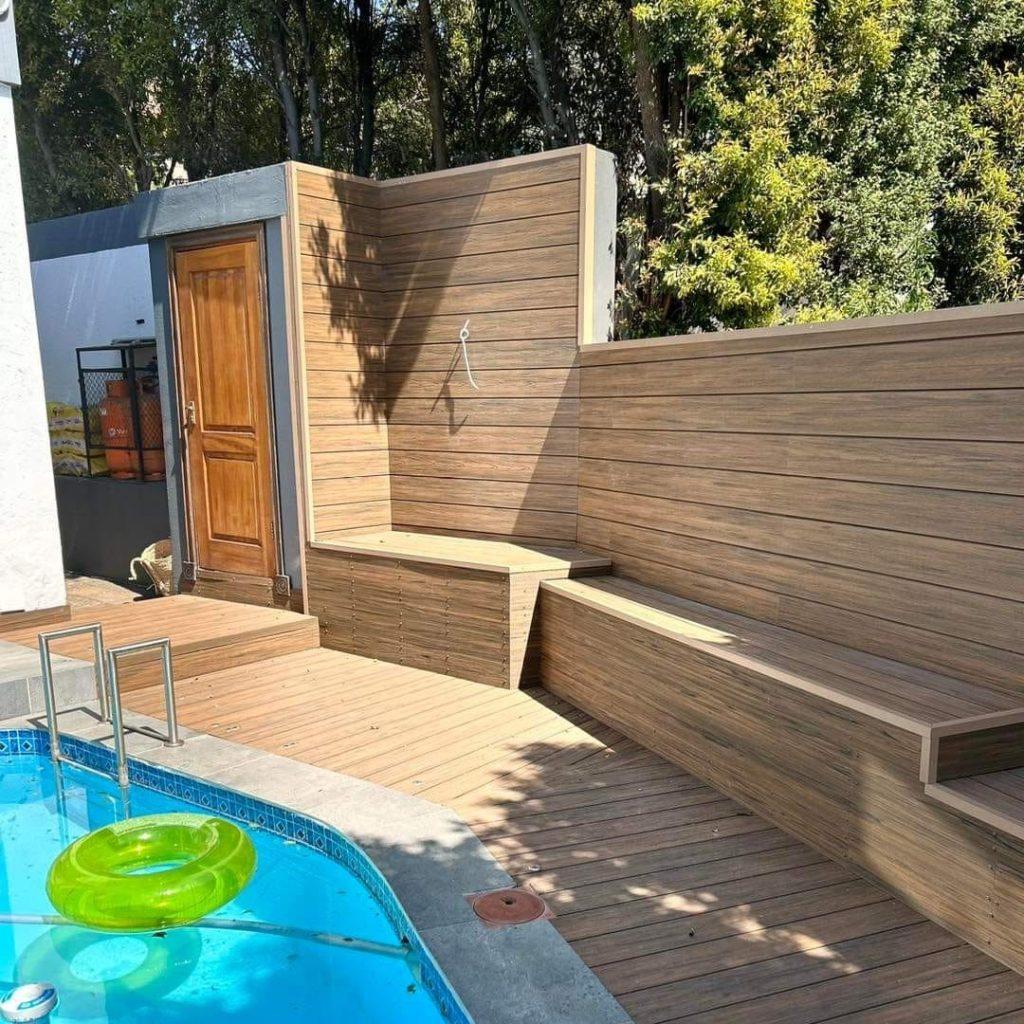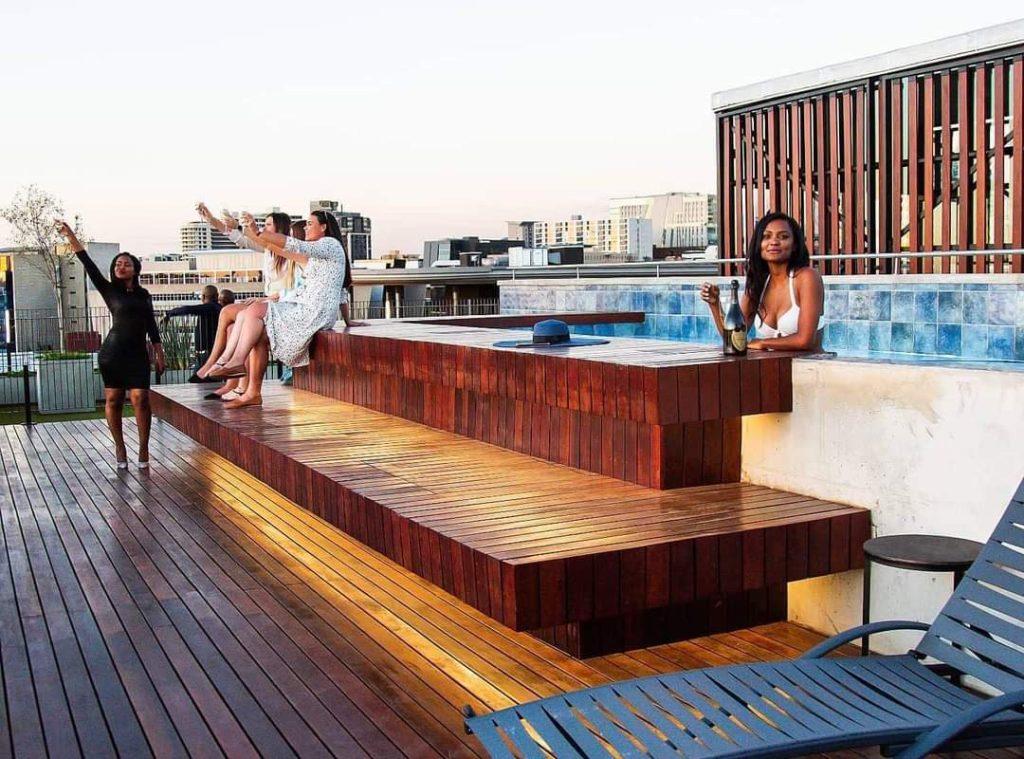As we explore the decking trends of 2023, our sights are also set on what 2024 will bring. Witnessing remarkable growth in timber and composite materials, the decking industry is reshaping our outdoor spaces with innovative designs and sustainable choices. This article explores what’s trending now and forecasts the future of decking.
Timber Decking: The Natural Classic

Timber decking is a top choice amongst homeowners this year and for a good reason.
Sourced from sustainable forest and pressured-treated – timber, it is not only an eco-friendly choice but one that is durable and long-lasting. Adding a new timber deck will ensure you have a functional outside space, improve the exterior look of your home and finally, it will even add value to your home. With the summer holiday around the corner, patios are perfect for socialising with family & friends without leaving your home. Creating an indoor living area that flows through to the timber patio can make the transition between spaces so smooth it goes unnoticed.
“When natural wood, without paint or sealer, is left to the elements, the wood takes on a deep, rich colour. As the patina develops, the natural grain and patterns of the wood are also made more apparent.” – Cited Homes and Antiques.
Composite Decking: The Future-Forward Choice

Undoubtedly, Composite Decking has established itself as a leading contender. But the question remains: What is Composite?
Composite is made from a unique combination of Bamboo fibres and plastic to provide you with three Composite options (Wood, Bamboo, and PVC Composite). Each option offers certain advantages and its own individual benefits.
Quality composite decking offers the beauty of timber in a hassle-free, durable option that will last longer, is gentler on the environment, and is virtually maintenance-free.
“Using a unique combination of bamboo and recycled plastics, composite products are environmentally friendly and free of toxic chemicals and preservatives typically used to treat natural wood.” – Cited Eva-Last Composite Decking.
Case Studies: A Throwback to Successful Projects
Let’s see how these materials are converting outdoor spaces in real life:
● The Lineal, Sandton: This project highlights the timeless charm of timber decking. Our revisit to this project (completed in 2019) demonstrated that the Massaranduba Hardwood decking has aged like a fine red wine.
(Images: The Lineal Pool area)
● Zimbali Capital Hotel and Fireroom: These venues showcase the diverse applications of timber. The Capital Hotel’s Timber Decking of Balau was treated to age to a silver-grey colour. The Fireroom was complimented with Meranti Timber Pergolas in a rich Silkwood brown finish.
(Images: Zimbali Capital Hotel and Fireroom)
● Featherbrook Estate: A great example of composite decking creating elegant, modern, and eco-friendly outdoor spaces.
(Images: Composite decking around the Pool area)
Pros and Cons: A Comparative Glance
When considering the options of Timber vs Composite, each has its unique benefits and considerations:

Timber vs Composite Decking
Aspect
Timber Decking
Composite Decking
Appearance:
It has a natural, classic look featuring distinct and unique elements.
Imitates the appearance of wood and provides comparable varieties.
Durability:
Susceptible to rot, decay, and insect damage if left untreated.
Generally more durable and resistant to decay, mildew, and insects.
Maintenance:
Wood requires regular cleaning, sanding, and resealing to maintain its quality.
It is lower in maintenance than wood and easier to upkeep over time.
Cost:
Less expensive initially, varying with wood type.
Higher long-term maintenance costs. Higher initial cost, but more cost-effective over time due to durability and low maintenance.
Installation:
Professional installation is recommended to ensure long-lasting perfection.
Professional installation is recommended to ensure long-lasting perfection.
Sustainability:
Timber is highly sustainable if sourced from Sustainable forests.
Made from Bamboo fibre and recycled plastic.
Balancing Cost-Effectiveness and Sustainability
“As we become increasingly aware of the importance of protecting our environment, the demand for sustainable and responsibly sourced products has increased. This has allowed the supply to meet demand, bringing prices down to an accessible level and making a high-quality, eco-certified timber floor an option for nearly all budgets, from large commercial projects to residential homes.” – Sustainability and Timber.
In 2023, cost-effectiveness isn’t just about the initial investment but also the long-term value. A high-quality deck can increase your property’s value and improve the look and enjoyment of your property. How much value a deck adds depends on the design, materials used, and quality of your build.
Timber offers a higher property value increase than Composite. As a Timber deck’s initial installation cost is lower than Composite, it offers a more significant benefit when considering ROI. However, Composite comes out on top if you compare the rand value of your returns. This is due to Composite requiring less maintenance over time.
Decking Decisions for Today and Tomorrow
When choosing between Timber and Composite decking, you must understand your personal preferences and consider your lifestyle and values. This will play a pivotal role in making the right decision.
Both materials are continuously adapting to meet the evolving demands of outdoor living, so you can confidently choose an option to suit your unique requirements.
Whatever path you choose, Conway Flooring and Decking is here to guide you towards a deck that meets today’s trends and is ready for tomorrow’s creations.
Visit us to explore your options and discover your ideal Decking solution.
